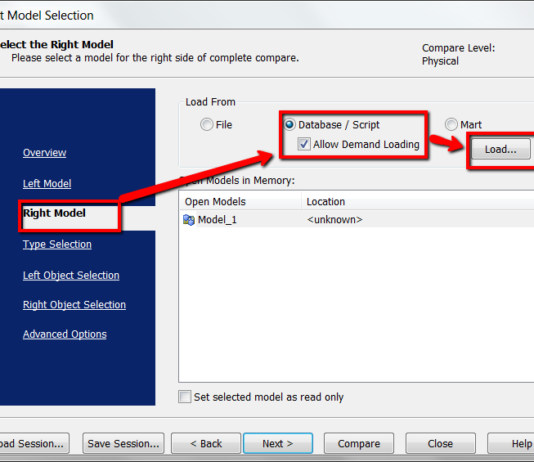

Specifies how the case conversion of logical names is handled during reverse engineering. If this option is enabled, the logical/physical link is broken between the logical and physical name. If this option is not enabled, all logical and physical names are set to the same value after the process completes. Overrides the physical name property for all objects in logical/physical models automatically during reverse engineering. Preserves the case exactly as it appears in the script file or database. Specifies how the case conversion of physical names is handled during reverse engineering.

Note: If the target database or script supports primary and foreign key declarations, you do not need to use the Primary Keys, Relations, Indexes, or Names options. Relationships are inferred from columns names only if all of the primary key columns of the parent are in the child table. Infers the relationships from the primary key column names. Relationships are inferred from table indexes only if the primary key columns of the parent table are part of the index in the child table. Infers the relationships from the table indexes. Select this option and then specify whether to use primary key column names or defined indexes: Infers the relationships between tables that are based on either primary key column names or defined indexes. Infers primary key columns for the tables that are based on defined indexes. Work with the following options: Primary Keys Specifies whether you want to infer primary keys or relationships, or both, during reverse engineering. Reverse engineers the tables and views that are owned by the users that are specified here. The current user details are entered in the Connection dialog. Reverse engineers only those tables and views that are owned by the current user. Reverse engineers all tables and views in the database for which you have the necessary permissions, regardless of the owner. Select one of the following ownership options: All You must have read and write privileges on all the tables that you want to reverse engineer, regardless of whether you are the owner of the table. Reverse engineers tables and views by ownership. If you select the System Objects check box the system tables, views and stored procedures related to system tables are reverse engineered. Specifies whether you want to reverse engineer system objects and user tables, or only user tables. If you save the option set as an XML file, you can use it with other models as well.

If you save the option set as a model, the options are applicable only to that model. The option set can be saved as a model or as an XML file. You can change the default option set and save it for future use. Items to Reverse Engineerĭisplays the default option set, which includes all the objects and properties for the selected target database. Note: To reverse engineer from a script, select a file that is saved either in ANSI or ASCII format. If you choose the script, click Browse to select the file. Specifies whether you want to reverse engineer from a database or a script. The Reverse Engineer - Set Options dialog opens. Select the new model type, template, and target database, then click Next.The Reverse Engineer - Select Template dialog opens. You must have read and write permissions on all the objects that you want to reverse engineer. The modeling tool builds its models by querying the system catalog of the database, rather than querying the specific objects. However, when you reverse engineer from a script, these options are overridden and all the objects are reverse engineered. The options that you select here determine the objects that are included in the model.
#Erwin data modeler reverse engineering how to
Working with Data Models › How to Reverse Engineer a Model from a Database or a Script › Select the Reverse Engineering OptionsĪfter you select the model type, template, and database, set the options to reverse engineer specific objects.


 0 kommentar(er)
0 kommentar(er)
